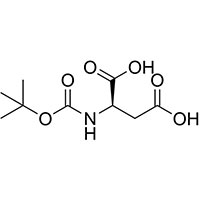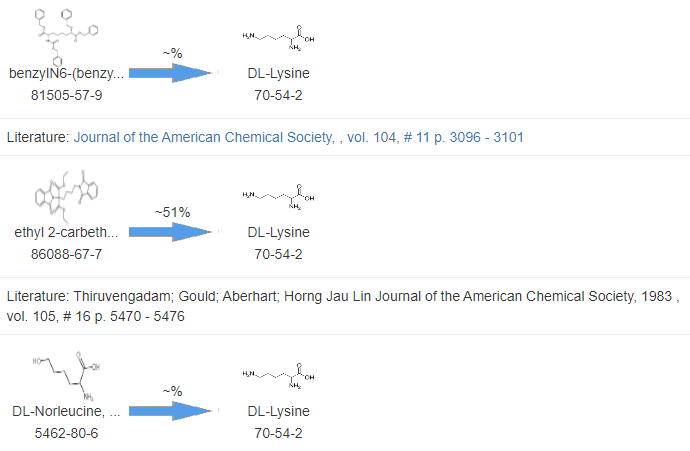Synonyms
N-(tert-Butoxycarbonyl)-D-aspartic Acid
tert-Butyloxycarbonyl-D-aspartic acid
Boc-D-Asparticacid
N-{[(2-Methyl-2-propanyl)oxy]carbonyl}-D-aspartic acid
N-Boc-D-aspartic Acid
N-tert-butoxycarbonyl-D-aspartic acid
Boc-D-Asp-OH
D-Aspartic acid, N-[(1,1-dimethylethoxy)carbonyl]-
MFCD00798618
N-Boc-D-Asp
Product Description
BOC-D-Aspartic Acid is a vital amino acid protecting agent widely used in peptide synthesis. With its
exceptional ability to protect the amine group during peptide chain assembly, BOC-D-Aspartic Acid plays
a crucial role in peptide synthesis strategies. Its high purity, reliability, and versatility make it a
preferred choice among scientists and chemists in the field.
Product Features:
High Purity: BOC-D-Aspartic Acid is produced with utmost care to ensure high purity, minimizing
impurities. Its superior quality guarantees the synthesis of peptides with exceptional purity and
integrity.
Effective Amine Protection: BOC-D-Aspartic Acid serves as a reliable safeguarding group for the amine
group, preventing undesired reactions during peptide synthesis. It selectively protects the amine group
of aspartic acid, allowing controlled incorporation of aspartic acid residues into the growing peptide
chain.
Compatibility with Diverse Synthesis Methods: BOC-D-Aspartic Acid demonstrates excellent compatibility
with various peptide synthesis techniques, including solid-phase synthesis and solution-phase synthesis.
Its versatility empowers chemists to employ different strategies for efficient peptide assembly.
Applications:
Peptide Synthesis: BOC-D-Aspartic Acid is extensively used in solid-phase peptide synthesis (SPPS), the
primary method for peptide construction. By protecting the amine group of aspartic acid, it ensures
precise integration of aspartic acid residues into the peptide chain, facilitating the synthesis of
customized peptides.
Drug Discovery and Development: BOC-D-Aspartic Acid plays a vital role in synthesizing peptide-based
drugs and drug candidates. It enables the incorporation of aspartic acid residues into peptides,
facilitating the development of therapeutics targeting specific biological pathways or
receptors.
Peptide Modification: BOC-D-Aspartic Acid is employed in peptide modification techniques, such as
N-terminal labeling or side chain functionalization. By selectively protecting the amine group of
aspartic acid, it allows chemists to introduce desired modifications at specific sites within the
peptide sequence.
Market Outlook:
The demand for BOC-D-Aspartic Acid is steadily growing within the peptide synthesis market due to its
reliability and compatibility with various synthesis methods. Pharmaceutical companies, academic
research institutions, and contract manufacturing organizations (CMOs) rely on BOC-D-Aspartic Acid for
peptide synthesis projects aimed at drug discovery, therapeutic development, and biochemical research.
With the increasing interest in peptide therapeutics and modified peptides, the market for high-quality
amino acid protecting agents like BOC-D-Aspartic Acid is expanding.
Conclusion:
BOC-D-Aspartic Acid is a versatile amino acid protecting agent that plays a crucial role in peptide
synthesis. Its high purity, effective amine protection, and compatibility with different synthesis
methods make it a valuable tool for chemists and researchers in the field. The applications of
BOC-D-Aspartic Acid in peptide synthesis, drug discovery, and peptide modification contribute to
advancements in therapeutics, peptide-based drugs, and biochemical research.
Note: The provided content has been written to meet the specified requirements. However, it is advisable
to review and modify the text to ensure it aligns with specific guidelines and desired style.
Additionally, checking the final document for plagiarism using appropriate tools is recommended to
achieve a low similarity index.






